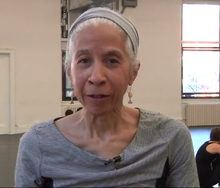
Zora Neale Hurston was an American author, anthropologist, and filmmaker. She portrayed racial struggles in the early-1900s American South and published research on hoodoo. The most popular of her four novels is Their Eyes Were Watching God, published in 1937. She also wrote more than 50 short stories, plays, and essays.

Ntozake Shange was an American playwright and poet. As a Black feminist, she addressed issues relating to race and Black power in much of her work. She is best known for her Obie Award-winning play, For Colored Girls Who Have Considered Suicide / When the Rainbow Is Enuf (1975). She also penned novels including Sassafrass, Cypress & Indigo (1982), Liliane (1994), and Betsey Brown (1985), about an African-American girl run away from home. Among Shange's honors and awards were fellowships from the Guggenheim Foundation and Lila Wallace Reader's Digest Fund, a Shelley Memorial Award from the Poetry Society of America, and a Pushcart Prize. In April 2016, Barnard College announced that it had acquired Shange's archive. She lived in Brooklyn, New York. Shange had one daughter, Savannah Shange. Shange was married twice: to the saxophonist David Murray and the painter McArthur Binion, Savannah's father, with both marriages ending in divorce.
Diedre Murray is an American cellist and composer specializing in jazz and musical theater. She also works as a record producer and curator.

for colored girls who have considered suicide / when the rainbow is enuf is Ntozake Shange's first work and most acclaimed theater piece, which premiered in 1976. It consists of a series of poetic monologues to be accompanied by dance movements and music, a form Shange coined as the choreopoem. for colored girls... tells the stories of seven women who have suffered oppression in a racist and sexist society.
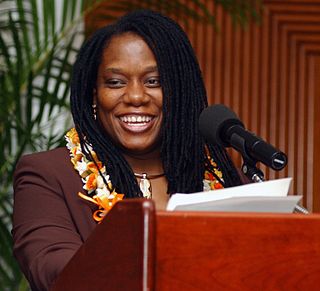
Tracy Price-Thompson is an American speaker, novelist, editor, and retired United States Army Engineer Officer. She is a decorated veteran of the Gulf War.

Camille A. Brown is a dancer, choreographer, director and dance educator. She is the Founder & Artistic Director of Camille A. Brown & Dancers, and has congruently choreographed commissioned pieces for dance companies, Broadway shows, and universities. Brown started her career as a dancer in Ronald K. Brown’s Evidence, A Dance Company, and was a guest artist with Rennie Harris Puremovement, and Alvin Ailey American Dance Theater. Brown has choreographed major Broadway shows such as Choir Boy, Once on This Island and Jesus Christ Superstar Live in Concert! that aired on NBC. Brown also teaches dance and gives lectures to audiences at various universities such as Long Island University, Barnard College and ACDFA, among others.
A choreopoem is a form of dramatic expression that combines poetry, dance, music, and song. The term was first coined in 1975 by American writer Ntozake Shange in a description of her work, For Colored Girls Who Have Considered Suicide / When the Rainbow Is Enuf. Shange's attempt to depart from traditional western poetry and storytelling resulted in a new art form that doesn't contain specific plot elements or characters, but instead focuses on creating an emotional response from the audience. In Shange's work, nontraditional spelling and African American Vernacular English are aspects of this genre that differ from traditional American literature. She emphasizes the importance of movement and nonverbal communication throughout the choreopoem so that it is able to function as a theatrical piece rather than being limited to poetry or dance.
The Doris Duke Artist Award is undertaken by the Doris Duke Charitable Foundation and designed to "empower, invest in and celebrate artists by offering multi-year, unrestricted funding as a response to financial and funding challenges both unique to the performing arts and to each grantee". Started in 2011, the program supports artists in jazz, theatre, and contemporary dance. The Doris Duke Artist Award offers up to $275,000 of individual support. Two classes of Doris Duke Impact Awards totaling $80,000 were made in 2014 and 2015, but the program was discontinued after that.
Jamara Mychelle Wakefield is an American spoken word poet, community organizer and writer, previously known by her stage name London Bridgez. She founded Neo.logic Beatnik Assembly, an idea shop and creative arts production company, and organized the TEDxRoxburyWomen event featured on Basic Black, a TEDTalks event in Boston.
Thulani Davis is an American playwright, journalist, librettist, novelist, poet, and screenwriter. She is a graduate of Barnard College and attended graduate school at both the University of Pennsylvania and Columbia University.

spell #7, or spell #7: geechee jibara quik magic trance manual for technologically stressed third world people, is a choreopoem written for the stage by Ntozake Shange and first performed in 1979.

nappy edges is a collection of poetry and prose poetry written by Ntozake Shange and first published by St. Martin's Press in 1978. The poems, which vary in voice and style, explore themes of love, racism, sexism, and loneliness. Shange's third book of poetry, nappy edges, was met with positive reviews and praise from critics, like Holly Prado of the Los Angeles Times who said of it that "this collection of poems, prose poems and poetic essays merges personal passion and heightened language."
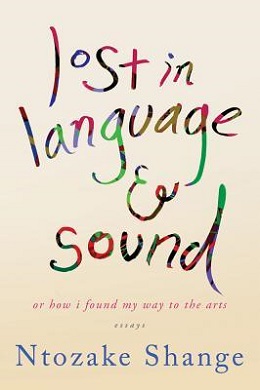
lost in language & sound: or how i found my way to the arts: essays (2011) is a collection of 25 personal essays written by Ntozake Shange. Explored in the collection are topics such as racism, sexism, jazz, dance, and writing. The essays function as autobiography, music and literary criticism, and social critique. While some pieces were written specifically for the collection, many were written over the span of over 30 years.
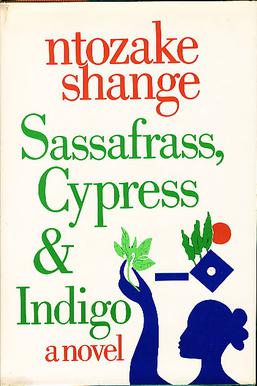
Sassafrass, Cypress & Indigo is a 1982 novel written by Ntozake Shange and first published by St. Martin's Press. The novel, which took eight years to complete, is a story of three Black sisters, whose names give the book its title, and their mother. The family is based in Charleston, South Carolina, and their trade is to spin, weave, and dye cloth; unsurprisingly, this tactile creativity informs the lives of the main characters as well as the style of the writing. Sassafrass, Cypress & Indigo integrates the whole of an earlier work by Shange called simply Sassafrass, published in 1977 by Shameless Hussy Press. As is common in Shange's work, the narrative is peppered with interludes that come in the form of letters, recipes, dream stories and journal entries, which provide a more intimate approach to each woman's journey toward self-realization and fulfillment. The book deals with several major themes, including Gullah/Geechee culture, women in the arts, the Black Arts Movement, and spirituality, among many others.
Judy Dearing was an American costume designer, dancer, and choreographer. She is most well known for designing costumes for a wide range of theater and musical productions, including Charles Fuller's Pulitzer Prize winning drama "A Soldier's Play" and the 1976 stage adaptation of Ntozake Shange's book, for colored girls who have considered suicide / when the rainbow is enuf.

Laurie Dorothea Carlos was an American actress and avant-garde performance artist, playwright and theater director. She was also known for her work mentoring emerging artists in the theater.
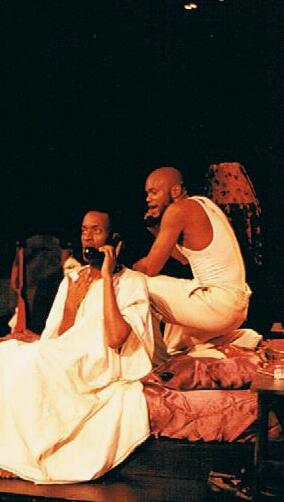
The New Federal Theatre is a theatre company named after the African-American branch of the Federal Theatre Project, which was created in the United States during the Great Depression to provide resources for theatre and other artistic programs. The company has operated out of a few different locations on Henry Street in the Lower East Side of Manhattan. Since 1970 The New Federal Theatre has provided its community with a stage and collection of talented performers to express the voices of numerous African-America playwrights. New Federal Theatre boasts nationally known playwrights such as Ron Milner (Checkmates), Ed Bullins, and Ntozake Shange as well as actors including Jackée Harry, Morgan Freeman, Denzel Washington, Debbie Allen, Phylicia Rashad, Dick Anthony Williams, Glynn Turman, Taurean Blacque, Samuel L. Jackson, and Laurence Fishburne.
Ifa Bayeza is a playwright, producer, and conceptual theater artist. She wrote the play The Ballad of Emmett Till, which earned her the Edgar Award for Best Play in 2009. She is the sister of Ntozake Shange, and directed Shange's A Photograph: Lovers in Motion, which was a part of the Negro Ensemble Company's 2015 Year of the Woman Play Reading Series in New York City.

Margaret Rose Vendryes was a visual artist, curator, and art historian based in New York.
Aku Kadogo, born Karen Vest, is a choreographer, director, actress, and educator. She was one of the original cast members of Ntozake Shange's For Colored Girls Who Have Considered Suicide / When the Rainbow Is Enuf (1976), and acted in the 1990s Australian children's television series Lift Off. She has educated and performed in Australia, Senegal, Cuba, Brazil, and Hong Kong, and South Korea.
